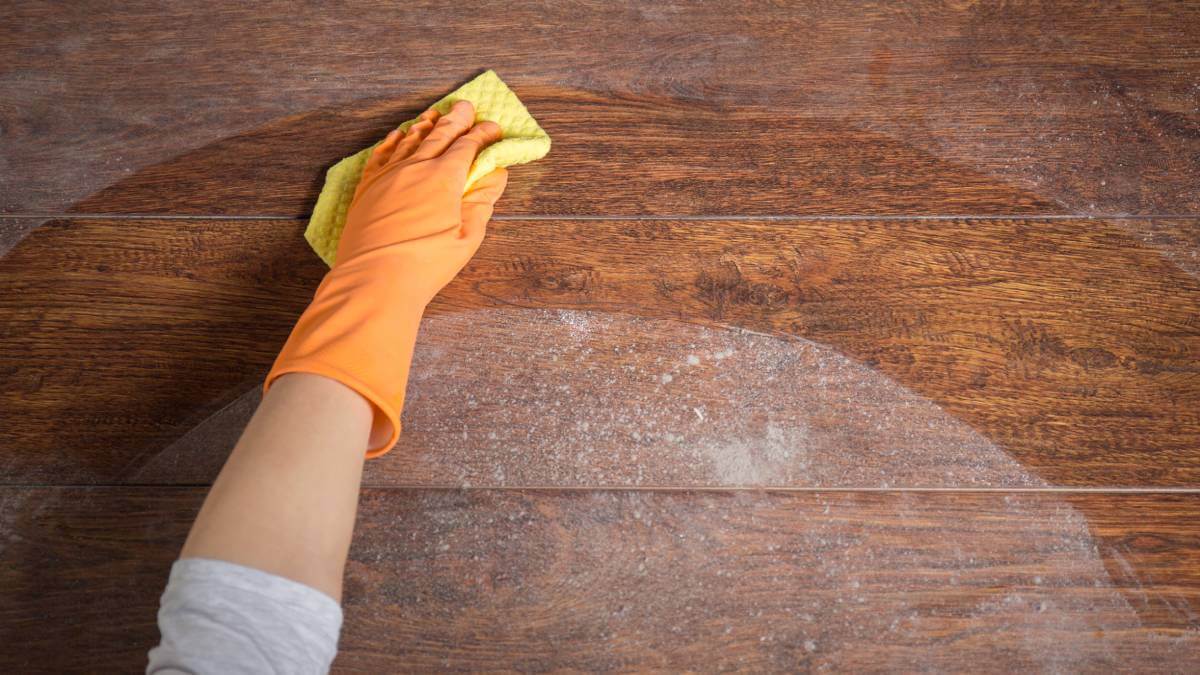In the pursuit of a clean and healthy home, many of us diligently sweep, vacuum and scrub away the visible particles that accumulate on our floors and surfaces. However, dusting every corner and crevice isn’t typically a part of a weekly clean. You might not give much thought to the dust lurking on windowsills or on tops of cupboards, but is it a health risk?
What is dust?
Dust is an inevitable part of everyday life. It consists of a complex mixture of tiny particles, including dead skin cells, fibres from fabrics, pollen, pet dander, dirt, microplastics and other human matter.
“If you’ve ever looked under the bed and seen a blue ball of dust, and wondered how it got there … it contains all kinds of things like hair, fabric fibres and skin,” says Mark Patrick Taylor, an honorary professor at Macquarie University and chief environmental scientist at Environment Protection Authority Victoria.
Prof. Taylor’s research has found that household dust can harbour potentially harmful contaminants such as trace metals and perfluorinated chemicals (PFCs).
Is dust a health risk?
Dust can be a health risk, but it depends on how much we are exposed to and for how long.
One of the most pressing concerns associated with household dust is its impact on respiratory health. Breathing in dust particles exacerbates existing respiratory conditions such as asthma or allergies and may trigger symptoms such as coughing, sneezing, wheezing and congestion.
Children, particularly infants and toddlers, are more vulnerable to the potential health risks associated with household dust. They often spend more time on the floor, where dust concentrations are higher, and their developing bodies may be more susceptible to the effects of allergens and chemicals.
However, Asthma Australia CEO Michele Goldman says you don’t need to be fanatical about every part of your house. There is something called the hygiene hypothesis that suggests childhood exposure to germs and certain infections helps develop the immune system.
“People who grow up on farms with two or more animals [for example] have greater immunity and fewer allergies than those growing up in homes that are spick and span,” Ms Goldman says.
“We don’t want to allow the dust to rise up and cover all our surfaces, but it’s about a healthy balance.”
How often should you clean?
The frequency of cleaning and dusting a home can vary widely depending on several factors, including the household’s occupants, their lifestyle and the location of the home.
Larger families tend to generate more dust, dirt and clutter, which may necessitate more frequent cleaning. Homes with pets, especially those that shed fur or feathers, also often require more frequent cleaning to remove pet dander, hair and tracked-in dirt. However, a home with two occupants and no pets likely needs less frequent cleaning.
Some people clean those more tricky areas of the home, such as cupboards, skirting boards and windowsills, once a month. Others might do it at the change of each season. It’s better to be proactive and not let dust build up so much that it becomes a major cleaning task. Tackling it more often will mean it’s not such a big job and you probably won’t put it off as much.
Prof. Taylor says vacuuming at least once each week will reduce the amount of dust mobilised into those more hidden areas. And if you wear shoes inside, changing that habit will help combat dangerous dust in the home.
“Ninety per cent of all shoes have some sort of faeces on the bottom,” says Prof. Taylor.
How to get rid of household dust
The best thing you can do is to use a damp cloth to dust rather than a duster. This will ensure you are trapping the dust rather than just spreading it around.
If someone else can do it, asthma sufferers should avoid cleaning extra dusty areas. If that’s not possible, they should protect themselves by wearing a mask while cleaning. Chemical cleaning products themselves can exacerbate health concerns such as asthma. Consider using natural products such as lemon, bicarb soda and vinegar.
When it comes to vacuuming, Asthma Australia recommends using a vacuum cleaner equipped with a HEPA filter.
How often do you clean and dust? Do you have any other tips on getting rid of household dust? Let us know in the comments section below.
Also read: Do you clean regularly enough? Check our handy guide to what should be ‘normal’
Disclaimer: This article contains general information about health issues and is not advice. For health advice, consult your medical practitioner.

